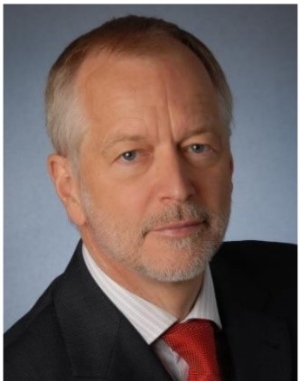|
“争流”学术沙龙(第十一期):Comprehensive view on nonlinear energy deposition and hydrodynamic effects in water |
||
|
||
|
报告题目: Comprehensive view on nonlinear energy deposition and hydrodynamic effects in water 报告时间:2024年7月4日09:45 报告人:Alfred Vogel 教授 报告地点:中以楼B201 报告摘要 Nonlinear energy deposition (plasma formation) by tightly focused laser pulses into aqueous media and water is of great practical relevance for laser surgery, materials processing in aqueous media, and laser-based microfluidics. At the same time, it is of fundamental interest because it can produce extreme states of matter and involves a sequence of highly nonlinear phenomena: plasma formation, shock wave emission, and cavitation. Laser-induced bubbles serve as models for studying principal aspects of bubble dynamics and their interaction with nearby structures. Tight focusing ensures the formation of compact plasmas with spherical shock wave emission and bubble oscillations, which can be well compared with the results of model predictions. We investigated the dynamics and energetics of these processes experimentally and theoretically for a large parameter space encompassing pulse durations from fs to ns, wavelengths from UV to IR, and pulse energies from the bubble threshold to high-density plasmas far above threshold. We developed novel interferometric and photographic techniques for capturing the laser-induced plasma formation, shock wave emission, and bubble dynamics and advanced the modeling of laser-induced plasma formation and hydrodynamic effects. Using these tools, we explored the tuning range of energy deposition from nano-effects to the generation of very high plasma energy densities > 200 kJ/cm3, resulting in highly disruptive effects. In the entire parameter range, we can track the partitioning of absorbed energy into vaporization, shock wave, and bubble energy. This enables to optimize parameter selection for different laser material processing tasks. Aspherical bubble dynamics induced by multiple plasmas opens new avenues for directed mechanical energy transfer. We explored this phenomenon by means of ultrafast high-resolution speckle-free photography.
报告人简介 Prof. Dr. Alfred Vogel, *31.12.1953, received his Ph.D. in 1987 at University of Göttingen, Germany, with Prof. Werner Lauterborn being his doctoral advisor. Presently he is Senior Professor of Physics at the Institute of Biomedical Optics (BMO), University of Lübeck, Germany. From 2010 to 2019, he served as Director of the BMO Institute and Deputy CEO of the Medical Laser Center Lübeck GmbH. Dr. Vogel is fellow of Optica and of SPIE. He published 104 peer-reviewed papers, 7 book chapters, and 52 proceedings papers (17170 citations, h = 54 according to Google Scholar), and reviewed for 62 international journals and 32 institutions. He holds 15 patents and has filed another 7 patent applications. He has delivered more than 200 plenary, key note, and invited talks. Dr. Vogel was editorial board member for the Journal of Biomedical Optics from 2002-2019, served as associate editor of Optics Express from 2006-2009, and is advisory editor of Biomedical Optics Express since its launching in 2010. Dr. Vogel has made major experimental and theoretical contributions to linear and nonlinear pulsed laser interactions with water, biomolecules, cells and biological tissues. He developed comprehensive theoretical frameworks for pulsed laser interactions ranging from free-electron-mediated photochemical modifications through photothermal alterations to optical breakdown and laser-induced cavitation. He invented new technologies for stroboscopic and ultra-high-speed shadowgraph and schlieren photography and applied them to the investigation of laser-induced plasmas, shock waves, cavitation bubbles, and ablation plume dynamics. These techniques are complemented by single-shot probe-beam techniques based on light deflection, scattering and interference that characterize laser-induced bubble oscillations and shock waves with ultrahigh spatiotemporal resolution. His biomedical research encompasses tissue ablation through linear absorption of UV and IR laser pulses, ablation processes in a liquid environment, as well as plasma-mediated surgery and molecular modifications within ocular tissues and cells. His work in these areas has led to innovative strategies for improving cellular micro/nano surgery, intraocular surgery, and refractive surgery.
欢迎广大师生参加!
联系人:姚志峰 教授,Email: yzf@cau.edu.cn 2024年6月26日 |
||
| 打印本页 关闭窗口 |


